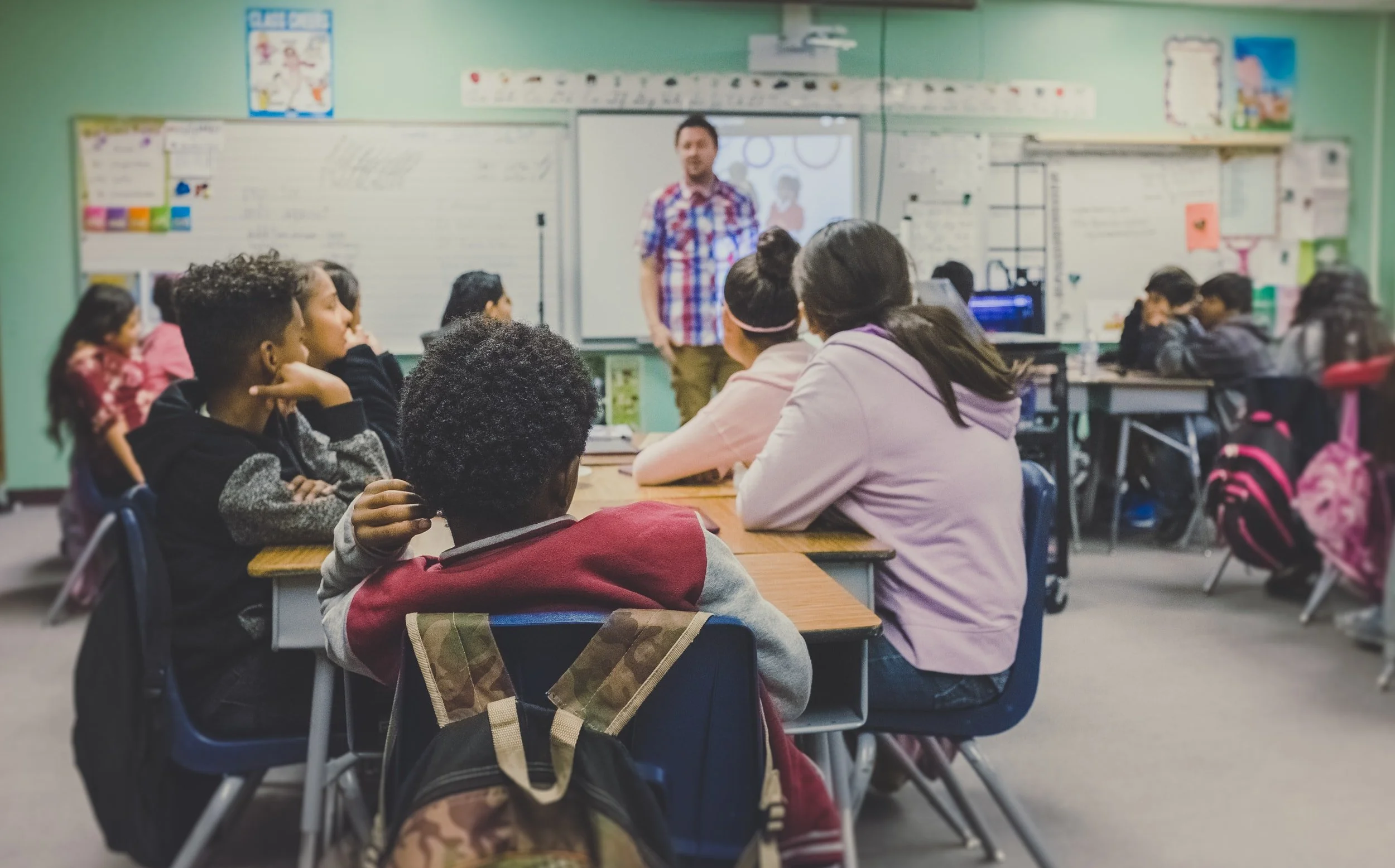Ep 106 // Digital Citizenship (Helping Elementary Students Understand Privacy & Security Online)
Inside This Week’s Episode: — Do your elementary student really know what privacy and security means when it comes to their interactions online? This episode in our digital citizenship series offers elementary teachers guidance on how they can help their students behave safely online both at school and home.
Privacy and Security are two words that can have a massive impact on students’ online interactions.
Digital citizenship has a lot of moving parts. Teaching our students to be responsible digital citizens is the job of all the important adults in their lives, including their classroom teachers.
Here on the podcast we’ve been breaking down this larger idea of being a good digital citizen into small, more manageable chunks and in this episode we’re talking about a super important aspect of digital citizenship and that is - security and privacy.
Oooof - that’s a biggie and one that may not always seem like something young students need to worry about, but they do. In fact, we can start at a very young age helping kids to see how to protect and respect others online, including themselves.
As a 21st century classroom, security and privacy can play a huge role as students are learning to become more independent online and begin exploring online. We want that to be a good thing — we want them to be able to use the amazing digital tools that are available to them, but above all, we want them to be safe about it and know how to protect themselves.
Links & Resources Mentioned in the Episode
EPISODE 102: Digital Citizenship: Making Healthy Media Choices and Finding Balance
Making ‘Privacy & Security’ Relatable to Students
When it comes to privacy and security online, we need start at the ground level with making sure our students understand the terms “privacy” and “security”.
We’ve got to make sure that these words and their definitions are familiar and students know how they relate to their digital experiences
Students come from different backgrounds and experiences when it comes to their digital use, so it’s key that we make sure everyone is on the same page.
Start by asking:
Do you ever go on the internet?
What kinds of things do you like to do online?
Help students to understand that going “online” isn’t just using a computer. Online activity can include a smart phone, tablet or iPad, website, and even apps.
Discuss with students how there are so many things to do online like learning new information, playing games, communicating with friends and family, and looking at pictures and videos - but it's important that in all of those things, we must be safe and responsible.
You can relate the terms of privacy and security to situations and experiences that students already know. For example, talk about how each student lives in their own home where their family can have privacy from the rest of their neighborhood. They can lock their doors and windows to keep their home secure at night or when they leave for the day.
In the same way, we use things like passwords to lock and protect the things we want to keep safe online because and there are some things that we don’t share online, but instead we keep private.
Helping students know what to keep private online
Once you’ve established what it means to be secure and private, then it’s time to discuss WHAT we should keep secure and private and how to decide. Some things it’s ok to share online, other times, it’s not. Students need to know the difference.
A good way to help students understand what’s okay to share is to have them think of information about themselves divided into two categories: personal and private.
Something personal might be things like their hobbies, pictures of their pets, favorite colors ,and so on. These are personal pieces of information that’s ok for anyone to know because it can not be used to identify you specifically because it is also true for many other people. Sharing these types of information can be positive and fun. It helps us connect and relate to others.
Private information should not be shared online. Private information includes your address, phone number, email addresses, full name, birthday or passwords. This information we would not want just any stranger to know, so we don’t just openly share it online. It’s information that is unique to you and can be used to specifically identify you.
And - beyond just telling students WHAT they shouldn’t share, we should also help them understand WHY this information should remain private. Help them to understand the consequences or impact of what could happen if private information got out to the wrong person.
If you’re working with older students who may have their own email addresses, or have access to social media - you might take this conversation a bit farther and discuss things that they should or shouldn’t be clicking on in addition to the things that they share. We all know that when we click on something online, we are automatically telling the internet things about ourselves without meaning to: things like click bait. Platforms like Facebook and Google keep track of what we click on and will show us more of that information. And things we click on can lead to some not so great websites, or lead us to false information.
We want our students to know that they should never click on an email that is sent from someone they don’t know without permission from a trusted adult. We want them to understand that pictures or headlines that they see online that seem impossible or unbelievable, or are designed to shock you and are usually just click bait, and therefore, you should NOT click on it.
Making Time to Teach Digital Citizenship in the Classroom
Now - before we go on, you might be thinking - ok, Rachael - this is good information, but WHEN exactly am I teaching this information to my students because it feels like just one more things to fit into my schedule.
I totally here ya. The concepts that I’m sharing with you do NOT have to be taught in isolation, in fact, you can weave these conversations into authentic situations that are taking place in your classroom right now.
Any time your students might be filling out information online - talk about it. Discuss why it’s ok for students to put their name or email address into platform like Google Classroom and not on public websites. Talk about about how Google Classroom is a secure website that only you, the teacher, have access to.
When students have to create a password for something, or use one of your school passwords to access a website - talk about what makes a good password or why it’s important to have that password in the first place.
When you hear students talking about what they saw online or things that they were doing on the internet (because, let’s face it - they talk!), weave in conversation about safe sharing and safe activity online.
When students are exploring online for some research project, or watching a video on YouTube - talk about what they should and shouldn’t be clicking on. Of course, your school likely has blocks to many outside websites that are deemed not safe for students, but you can still have these quick conversations so that when they are in other places, like their homes, they know that they shouldn’t click on ads on YouTube or on pop-ups that show on websites.
These are teachable moments. Have these conversations in real time using real experiences. It will make a more lasting impact on students and help them to see these safe practices in their day to day life. These are the kinds of conversations we need to be having in 21st century classrooms.
The need to teach students to be safe online is just a reality of living in our digital world. And the more we use technology in our classroom, the more we need to weave in these types of discussions.
REVIEW & SUBSCRIBE TO THE CLASSROOM COMMUTE PODCAST
Don’t miss a single episode. Subscribe to the podcast and you’ll get notified each week when a new episode gets dropped! And - if you love what you hear, I’d be so honored if you took a quick moment to rate and review the podcast so that other awesome teachers can find the podcast!




